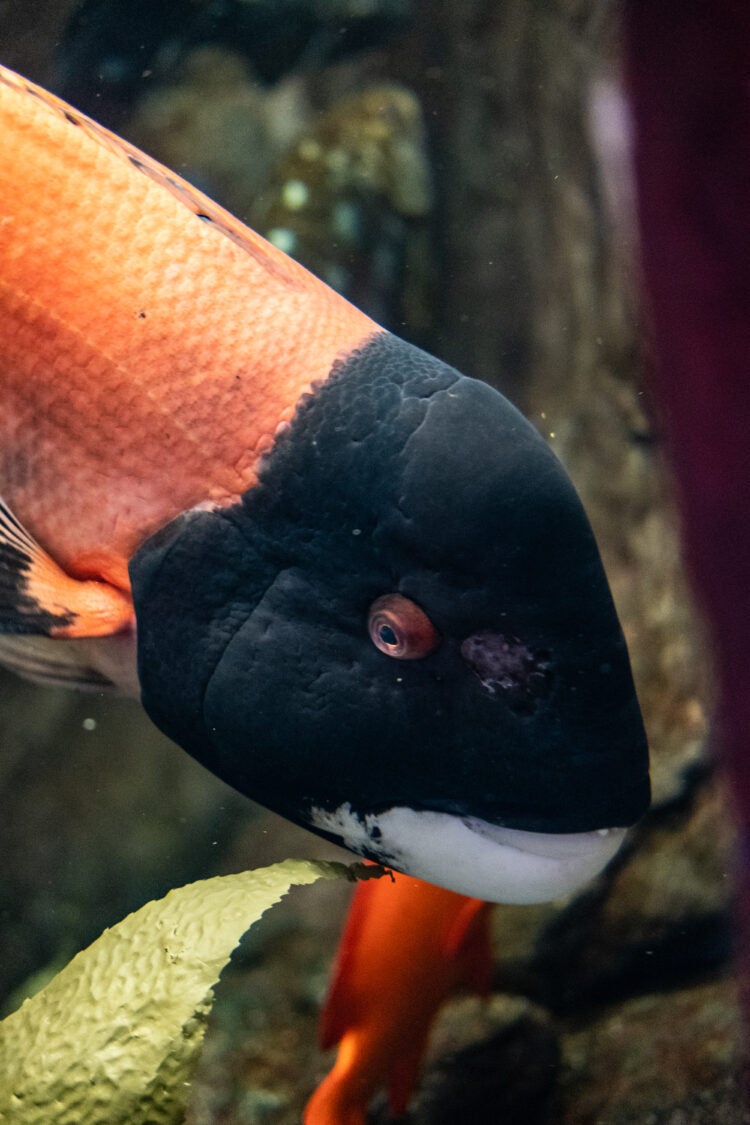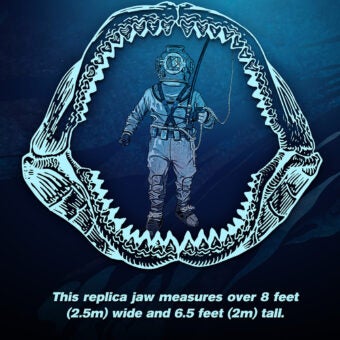-
Size
Up to 3 feet (1 m) -
Diet
Sea urchins, crabs, lobsters and other hard-shelled prey -
Range
Eastern Pacific Ocean -
Habitat
Kelp forests
Physical Characteristics
- Adults reach a maximum length of about 3 feet (1 m).
- Juveniles are bright orange in color with prominent blue dots at the fins and the base of the tail. The lower jaw is white and most individuals have a white line running from the mouth to the caudal fin.
- As adults, males and females are sexually dimorphic, meaning the males look different from the females.
- Females are smaller and sleeker than males, solid red-orange above and white ventrally. The lower jaw is bright white.
- Males are more robust, with large bulging foreheads. In coloration, they are black at the head and tail, with an orange midsection. The lower jaw is bright white.
Animal Fact
Sequential hermaphrodite (protogynous): each individual starts life as a female and then changes to a male.
Diet / Feeding
- Diet consists primarily of sea urchins, crabs, lobsters and other hard-shelled prey.
Range / Habitat
- Occurs in the Eastern Pacific from about Monterey Bay to the Gulf of California.
- Found over rocky bottoms, particularly kelp forests, at depths of about 100 feet (30.5 m).
Reproduction & Growth
- During mating season (between July and September) male sheephead become territorial and defend their spawning territory. Dominant males lead the females in a circular pattern as they broadcast sperm and eggs, respectively.
- The females spawn between 36,000 and 296,000 eggs, which hatch into larvae.
- Spawning occurs most commonly during the summer months.
Conservation Status
- “Vulnerable” on the IUCN Red List.
Additional Information
- Sequential hermaphrodite (protogynous): each individual starts life as a female and then changes to a male.
- The California sheephead has large, prominent teeth and can bite if handled improperly.
- Common predators include harbor seals, California sea lions and various sea bird species.






